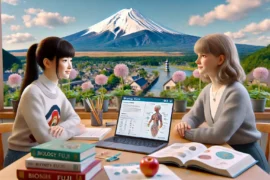Class 8 Science Quiz |
Deepening Your Understanding of Science: A Guide for Class 8 Students
Introduction
Science is a subject that unlocks the mysteries of the universe, from the tiniest cells to the vastness of space. For Class 8 students, science becomes more challenging as it introduces complex concepts and theories that lay the foundation for further studies in higher grades. This article is designed to complement a challenging quiz by providing detailed explanations and examples that will help you better understand these critical scientific concepts. Whether it’s understanding the laws of physics, the structure of cells, or the processes that power our planet, this guide will help you explore the wonders of science with confidence.
Mitochondria: The Powerhouses of the Cell
Mitochondria are organelles within cells that generate most of the cell’s supply of ATP, which is used as a source of chemical energy. They are known as the powerhouses of the cell because they convert the energy stored in glucose into ATP, which powers cellular processes.
Example
Think of mitochondria as the power plants of a city. Just as a power plant generates electricity to keep the lights on and machines running, mitochondria generate energy to keep the cell functioning. Without mitochondria, cells wouldn’t have the energy they need to grow, divide, and perform other essential tasks.
Hydrochloric Acid: A Key Component of Digestion
Hydrochloric acid (HCl) is a strong acid found in the stomach, where it plays a crucial role in digestion. It helps break down food, activates digestive enzymes, and provides an acidic environment that kills harmful bacteria.
Example
When you eat, hydrochloric acid in your stomach helps to break down the food into smaller, more manageable pieces, making it easier for your body to absorb the nutrients. Without HCl, your digestive system wouldn’t work as efficiently, leading to problems with digestion and nutrient absorption.
Newton’s Third Law: Understanding Action and Reaction
Newton’s Third Law of Motion states that for every action, there is an equal and opposite reaction. This law explains how forces interact and why objects move in response to forces applied to them.
Example
When you jump off a diving board, your legs push down on the board (action), and the board pushes you up into the air (reaction). This principle is also why rockets can propel themselves into space by expelling gas in one direction, which pushes the rocket in the opposite direction.
Venus: The Hottest Planet
Despite being the second planet from the Sun, Venus is the hottest planet in our solar system. Its thick atmosphere is composed mainly of carbon dioxide, with clouds of sulfuric acid, which traps heat through the greenhouse effect, leading to extremely high surface temperatures.
Example
Venus’s surface temperature is hot enough to melt lead, reaching up to 467°C. This intense heat makes Venus an inhospitable place, but studying its atmosphere helps scientists understand the greenhouse effect and its impact on Earth.
Nitrogen: The Most Abundant Gas in the Atmosphere
Nitrogen makes up about 78% of Earth’s atmosphere, making it the most abundant gas. While nitrogen is essential for life, it must be converted into a usable form, such as nitrates, before plants and animals can utilize it.
Example
Nitrogen is a critical component of proteins and DNA, which are essential for all living organisms. Plants absorb nitrogen from the soil, and it moves up the food chain as animals eat the plants. This makes nitrogen an integral part of the ecosystem.
Energy Transformation in Batteries
Batteries are devices that convert chemical energy into electrical energy. This transformation occurs through a chemical reaction within the battery, which generates a flow of electrons, or electricity, that can be used to power electronic devices.
Example
When you turn on a flashlight, the battery inside converts chemical energy into electrical energy, which powers the light bulb. This process is crucial for the operation of portable electronic devices, from smartphones to remote controls.
Photosynthesis: The Source of Life on Earth
Photosynthesis is the process by which plants convert sunlight into chemical energy stored in glucose. This process occurs in the chloroplasts of plant cells and is essential for the survival of nearly all life on Earth.
Example
Through photosynthesis, plants produce glucose, which serves as food for the plant and oxygen as a byproduct, which is released into the atmosphere. This oxygen is essential for the survival of animals and humans, making photosynthesis a fundamental process in the Earth’s ecosystem.
The Challenge of Non-Renewable Resources
Non-renewable resources, such as coal, oil, and natural gas, are finite resources that cannot be replenished within a human timescale. Once they are used up, they cannot be replaced, leading to potential energy shortages and environmental concerns.
Example
Coal is a non-renewable resource that takes millions of years to form from the remains of ancient plants. Burning coal releases energy but also produces carbon dioxide, a greenhouse gas that contributes to global warming. As a result, there is a growing need to shift towards renewable energy sources like wind and solar power.
The Newton: Measuring Force
The Newton (N) is the SI unit of force, named after Sir Isaac Newton. It is defined as the amount of force required to accelerate a mass of one kilogram at a rate of one meter per second squared.
Example
When you push a shopping cart, you are exerting force. The amount of force you apply determines how fast the cart moves. If you push harder, the cart accelerates more quickly, demonstrating the relationship between force, mass, and acceleration described by Newton’s Second Law of Motion.
Earth’s Outer Core: A Molten Sea of Iron and Nickel
The outer core of the Earth is composed primarily of molten iron and nickel. This layer is responsible for generating Earth’s magnetic field, which protects the planet from harmful solar radiation and plays a crucial role in navigation and animal migration.
Example
The movement of molten iron in the outer core creates electric currents, which generate Earth’s magnetic field. This magnetic field extends far into space and forms a protective shield around the planet, deflecting charged particles from the Sun.
Mitosis: The Key to Growth and Repair
Mitosis is the process by which a single cell divides to form two identical daughter cells. This process is essential for growth, development, and tissue repair in multicellular organisms.
Example
When you get a cut, your body repairs the damaged tissue by producing new cells through mitosis. These new cells are identical to the original cells, ensuring that the tissue is restored to its normal function.
Hydrogen: The Universe’s Most Abundant Element
Hydrogen is the most abundant element in the universe, making up about 75% of its elemental mass. It is the primary fuel for nuclear fusion in stars, where hydrogen atoms fuse to form helium, releasing vast amounts of energy.
Example
The Sun, like other stars, generates its energy through nuclear fusion, where hydrogen nuclei combine to form helium. This process releases the light and heat that makes life on Earth possible.
The Greenhouse Effect: Warming the Planet
The greenhouse effect is a natural process that warms the Earth’s surface. It occurs when certain gases in the atmosphere, such as carbon dioxide, trap heat from the Sun, preventing it from escaping back into space. While the greenhouse effect is essential for maintaining a habitable climate, an increase in greenhouse gases due to human activities is leading to global warming.
Example
The burning of fossil fuels releases large amounts of carbon dioxide into the atmosphere, enhancing the greenhouse effect and leading to higher global temperatures. This change in climate has far-reaching impacts, including more frequent extreme weather events, rising sea levels, and disruptions to ecosystems.
Igneous Rocks: Born from Fire
Igneous rocks are formed from the cooling and solidification of molten magma or lava. These rocks can be found both on the Earth’s surface and beneath it. Depending on where they form, igneous rocks can have different textures and compositions.
Example
Granite is an intrusive igneous rock that forms when magma cools slowly beneath the Earth’s surface, allowing large crystals to develop. In contrast, basalt is an extrusive igneous rock that forms when lava cools quickly on the surface, resulting in smaller crystals.
The Essential Role of Osmosis
Osmosis is the process by which water molecules move across a semipermeable membrane from an area of lower solute concentration to an area of higher solute concentration. This process is vital for maintaining the balance of fluids in cells and tissues.
Example
In plants, osmosis helps to maintain turgor pressure, which keeps the cells firm and supports the structure of the plant. Without osmosis, plants would wilt, and cellular processes would be disrupted.
Conclusion
Science is a field that constantly challenges us to think critically, explore new ideas, and understand the world around us. By mastering the concepts discussed in this article, Class 8 students can build a strong foundation for future scientific studies and develop the skills needed to tackle more complex topics in high school and beyond. Whether you’re learning about the forces that shape our planet or the processes that power life, science offers endless opportunities for discovery. Keep exploring, stay curious, and enjoy the journey of learning!








Comments are closed.